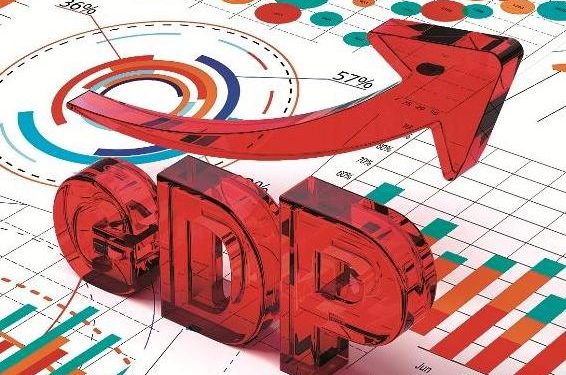United Nations: India has emerged from a “very tough second wave” of Covid-19, Gita Gopinath, the International Monetary Fund’s (IMF) Chief Economist, said Tuesday at the release of the flagship report that showed India continuing to be the world’s fastest growing major economy clocking a growth rate of 9.5 per cent this fiscal year and 8.5 per cent in the next.
The IMF’s World Economic Outlook (WEO) report kept the gross domestic product (GDP) growth projections it had made in July while India was in the grip of Covid-19’s second wave and had cut by 3 per cent its forecast of 12.5 per cent made in April before the pandemic’s resurgence.
Briefing reporters at the release of the report in Washington, Gopinath said: “India, came out of a very, very tough second wave and that led to a big downgrade in July but we have no change.”
“India is doing well in terms of vaccination rates and that’s certainly helpful,” she said.
India does, however, face many challenges, she noted.
“As of now, you know there are many challenges that the Indian economy always does face with regard to the financial market, with regard to the fact that the virus has not gone yet,” Gopinath said.
Asked if the large fiscal deficit in India was a major concern, Malhar Nabar, the Deputy Division Chief in IMF Research Department, said that while a medium-term strategy was needed to bring it down, it was still possible to meet the pressures from any future pandemic upsurge.
“We think that there’s still room to provide more support if needed, if the pandemic takes a turn for the worse, and to provide it in a targeted manner to the worst affected households and firms,” he said.
“But going forward over the medium term, it would be important to put in place, credible, medium term strategy to bring down the debt to GDP ratio and create space to meet the future development needs and infrastructure needs,” he added.
The WEO said that India’s Covid-battered economy had shrunk by 7.3 per cent in the last fiscal year.
Its long-term forecast for India’s GDP growth is 6.1 per cent in 2026.
In the WEO tables, China followed India with eight per cent this year and 5.6 per cent the next — a reduction of 0.1 per cent for both years from the forecast made in July.
The UK came next with 6.8 per cent growth this year, followed by France at 6.5 per cent, and the US at six per cent.
The global economy is projected to grow 5.9 per cent in 2021 and 4.9 per cent in 2022 — 0.1 percentage point lower for 2021 than in the July forecast.
The WEO said: “The downward revision for 2021 reflects a downgrade for advanced economies — in part due to supply disruptions — and for low-income developing countries, largely due to worsening pandemic dynamics.”
Gopinath, in her foreword to the WEO, said: “The global recovery continues but the momentum has weakened, hobbled by the pandemic.”
She wrote about the global picture: “Fuelled by the highly transmissible Delta variant, the recorded global Covid-19 death toll has risen close to 5 million and health risks abound, holding back a full return to normalcy. Pandemic outbreaks in critical links of global supply chains have resulted in longer-than-expected supply disruptions, further feeding inflation in many countries.”
“Overall, risks to economic prospects have increased, and policy trade-offs have become more complex,” she warned.
The WEO projected a wary outlook: “Overall, the balance of risks for (global) growth is tilted to the downside. The major source of concern is that more aggressive SARS-CoV-2 (Covid-19) variants could emerge before widespread vaccination is reached.”
The WEO, which stressed the importance of vaccination, said: “The development of Covid-19 vaccines was encouraged by unprecedented public support.”
As an example, it cited the help in scaling up manufacturing by the Indian government grants to vaccine producers.
The IMF forecast is more than a per cent higher than the World Bank’s estimate of 8.3 per cent for this fiscal year, which puts it behind China’s 8.5 per cent growth this year.
The Bank’s Regional Economic Update released last week said India’s GDP growth is expected to moderate to 7.5 per cent next year and 6.5 per cent in 2023-24.
The United Nations, which made its forecast for the calendar year, rather than the fiscal, said it expected India’s economy to grow by 7.5 per cent this calendar year and rebound to 10.5 per cent next year.
India’s consumer price index is expected to grow by 5.6 per cent this fiscal year and by 4.9 the next, according to the IMF’s WEO.
The Maldives, whose economy shrunk by 32 per cent last year, is expected to rebound to 18.9 per cent this year and moderate to13.2 per cent next year, the WEO said.
Elsewhere in South Asia, growth is expected to be slower. Pakistan’s GDP is forecast to grow by 3.9 per cent this year, and by 4 per cent the next, and Bangladesh by 4.6 per cent this year and 6.5 per cent the next year, according to the WEO.
Sri Lanka’s growth is forecast to grow 3.6 this year and moderate to 3.3 next year, while Nepal’s GDP is expected to grow by 1.8 per cent this year and then rebound to 4.4 per cent, the report said.
Bhutan’s economy is forecast to continue to shrink by 1.9 per cent this year, but grow by 4.2 per cent next year, according to the WEO.
IANS






































